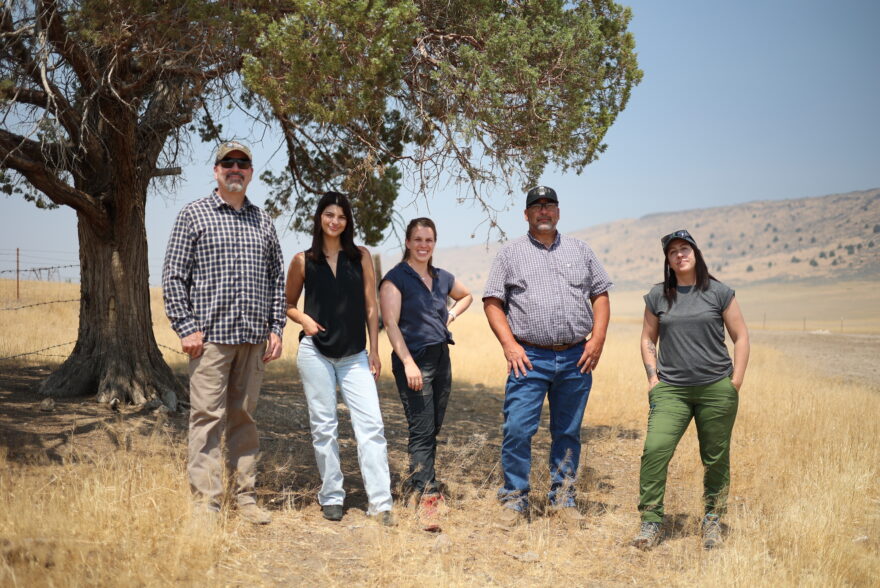Resilient Roots: How the Modoc Nation is Healing Homelands and Community


Since time immemorial, the Modoc people lived abundantly across lands now known as Southern Oregon and Northern California.
Written by: Saraya Hamidi, Indigenous Partnerships Manager, and Kelsee Taylor, Project Development Manager
As lake people, they lived in villages around Tule, Lower Klamath, and Clear Lake. Lower Klamath Lake was an abundant home for diverse wildlife and served as a breeding ground for millions of birds, inspiring the creation of the nation’s first waterfowl refuge. But by the mid-1800s, non-Native people were increasingly encroaching on Native lands, seeking farmland and gold.
As the first California governor declared a “war of extermination” on the Indigenous peoples, the Modoc people sought to remain in their homelands. The federal government refused, escalating matters into what became known as the Modoc War of 1872 to 1873. Though Chief Kintpuash (Captain Jack) and the Modoc people successfully warded off the U.S. military for months, leaders were eventually captured and killed, and many Modoc people were displaced to what is now called Oklahoma, where the Modoc Nation reservation exists today.
Following this forced removal, the Bureau of Reclamation began establishing a network of dikes, canals, drains, and pumps across the Modoc people’s homelands, disconnecting the floodplain from the Klamath River and draining the wetlands for railway and agricultural users. “The landscape was sacrificed,” says Ken Sandusky, Resource and Development Director of the Modoc Nation Homelands program. “This is a case of genocide and ecocide. The forced removal of Modoc people resulted in the wholesale degradation of the ecosystem.” Today, much of Lower Klamath Lake is dry. But eager to restore their ancestral lands, the Nation returned.
In 2021, Modoc Nation launched the Homelands Program to reacquire and restore ancestral lands. They founded the Modoc Ranch and purchased a total of approximately 4,000 acres in Siskiyou and Modoc counties with the aim of supporting local economic activity and restoring the watershed through regenerative grazing, fuels management, fire reintroduction, and invasive plant management. Through the Shapa’sh Landscape Restoration Project, they are also partnering with the Modoc National Forest and Ore-Cal Resource Conservation and Development Area Council to improve landscape health across boundaries. Through their efforts, the landscape has already experienced significant improvements, including miles of derelict fencing cleanup, reduced trespass grazing, and increased water availability.
Last month, Blue Forest had the opportunity to visit our friends at the Modoc Ranch and learn more about their vision for ecosystem restoration. We learned about the program’s profound impact and discussed ways to support their work moving forward.
While the Homelands program restores the ecosystem, it also intends to support healing for all Modoc people. Brian Herbert, Homelands Manager, Modoc descendant, and member of the Klamath Tribes, says of the program, “Every step I take out here is in honor of my ancestors… and any part of this landscape is a part of me.”
While the landscape has already benefited from their stewardship, Sandusky says there is much more to do. The Modoc Nation aims to establish a First Foods Farm, using existing built irrigation infrastructure to bring water back to the landscape and support Modoc food sovereignty.
Philanthropic support has played a significant role in building this program. Sandusky shares, “Working with philanthropic partners helps us build the foundation for a program that we hope will endure for generations. Philanthropic funding for capacity building and planning helps us prepare for state and federal grants, such as the California Tribal Nature Based Solutions grant we received this year.” Blue Forest hopes to support the program in attracting more philanthropic funding to sustain success in a constantly evolving funding landscape.
Moving forward, the Nation hopes to work through diverse collaborative partnerships to someday see a reconnected floodplain, restored and reconnected habitat, and increased collaboration with other Tribes, irrigation districts, and agency partners, including the U.S. Forest Service, U.S. Fish & Wildlife Service, and Bureau of Land Management.
150 years after their greatest hardship, the Modoc Nation is “relocated, resilient, and revitalized,” believing more than ever that their homelands will be revitalized too.
To explore ways to support the Modoc Nation Homelands program, reach out to Resource and Development Director Ken Sandusky at 541-891-7321 or kenneth.sandusky@modocnation.com.